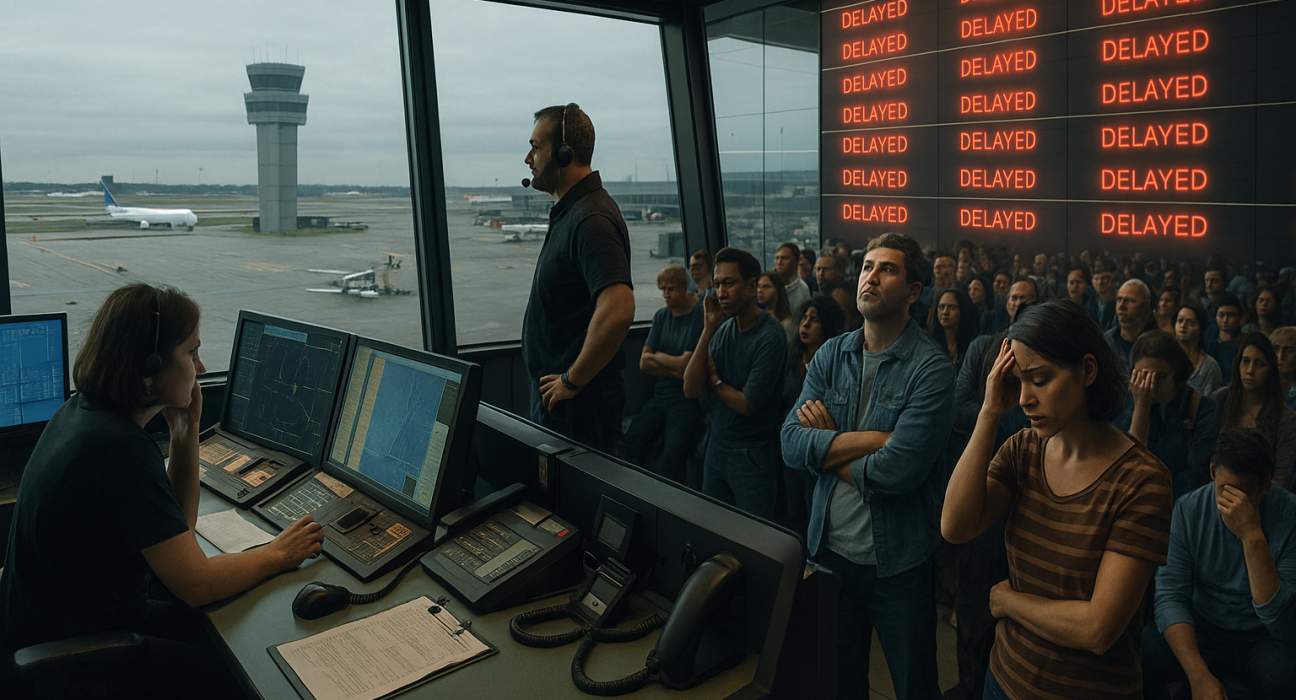As the U.S. federal government shutdown entered its fourth week in late October and early November 2025, significant operational strains emerged within domestic air travel systems. According to ABC News, in the New York City region alone up to 80% of air-traffic-controller positions were absent at one point—while the FAA said roughly half of the “Core 30” busiest airport control facilities across the country reported staffing shortages.
The Guardian reported that nearly 50% of the 30 busiest U.S. airports were affected by controller absences, with at least 35 FAA facilities—some located at major hubs such as New York’s LaGuardia, Newark, Dallas and Phoenix—reporting staff shortfalls. Flight-tracking website FlightAware recorded thousands of delays and cancellations on high-traffic days; for example, on one recent Friday more than 5,600 flights were delayed and 500 cancelled.
Transportation Secretary Sean Duffy warned on ABC News that with ongoing staffing shortfalls, the FAA would slow or halt air-traffic flow: “We will delay, we will cancel … to make sure people are safe.” The core issue arises because controllers and TSA officers are deemed “essential” and thus continue working without pay during the shutdown—some 13,000 controllers and 50,000 TSA staff are affected.
The disruptions are further compounded by existing structural shortages: the FAA was already short some 3,000 controllers prior to the shutdown. The additional unpaid status leads to increased fatigue, sickness calls, and absenteeism—conditions that degrade operational resilience.
Main Points
- Widespread staffing shortages are affecting air-traffic-control facilities and airport operations during the shutdown.
- The absence of pay and mounting financial/psychological strain is forcing some controllers to call in sick, or being unable to sustain long shifts.
- Airline hubs and commuter-connecting airports are seeing measurable delays and cancellations, with cascading ripple-effects across the U.S. air-travel network.
- The FAA emphasises that safety remains the priority, and slower flows or cancellations are a direct response to staffing constraints rather than operational normalcy.
- The shutdown exposes a broader vulnerability in the aviation system: reliance on essential staff who must continue working without pay, plus pre-existing workforce shortfalls.
Pros & Cons
Pros:
- The transparency of the FAA and Transportation Department about staffing pressures may build public awareness and prompt quicker resolution of the shutdown.
- Slowing or managing traffic proactively in response to staffing shortages helps preserve safety margins rather than risking uncontrolled operations.
- Highlighting these vulnerabilities may lead to future policy reforms for contingency staffing, funding safeguards and more resilient infrastructure.
Cons:
- Passengers face tangible disruption—longer wait-times, cancellations, missed connections—eroding confidence in the U.S. air-travel system.
- Cash-strained essential workers may face undue hardship, which could contribute to attrition or further service degradation.
- The patchwork of airport-by-airport impacts and inconsistent counts of delays make public messaging confusing, risking negative perception and commercial cost for airlines and airports.
- If the shutdown continues, escalating delays may ripple into economic impacts—cargo transport, tourism, supply-chain links—and potentially reduce competitiveness.
Projections & What It Means for the Future
- If the budget impasse persists, staffing shortages may deepen and airport hubs could institute stricter flow limits, meaning longer delays, higher cancellation rates and possible temporary closures of some control-facilities.
- Longer-term, the incident may become a case study prompting Congress to explore automatic funding lines for critical aviation infrastructure to keep essential workers paid even during appropriations stalemates.
- Airlines, airports and air-traffic-control authorities may accelerate investment in automation, remote tower systems, contingency staffing and resilience protocols to mitigate future disruptions of this kind.
- The reputational damage to U.S. air travel—already facing global competition—could prompt airlines and hubs to improve customer-outreach, alternative routing, and investment in redundancy.
- For aviation-workforce policy, the situation underscores that “essential” workers without pay are vulnerable—raising questions about labour relations, morale, retention and disaster-planning across critical infrastructure sectors.
References
- ABC News: “80% of NYC-area air traffic controllers absent amid ‘surge’ in call-outs: FAA”, Oct 31 2025. ABC News
- The Guardian: “Flights delayed across US amid air traffic controller shortages as shutdown drags on”, Nov 1 2025. The Guardian+1
- Politico: Sean Duffy warns airport delays will persist as shutdown drags on, Nov 2 2025. Politico
- Hindustan Times: “US air traffic controllers struggle amid government shutdown: ‘Overworked and underpaid’”, Nov 3 2025. Hindustan Times
- Business Insider: “If you’re flying during the government shutdown, you’re 10 times more likely to be delayed by staff shortages than normal”, Oct 9 2025. Business Insider








Leave feedback about this
You must be logged in to post a comment.